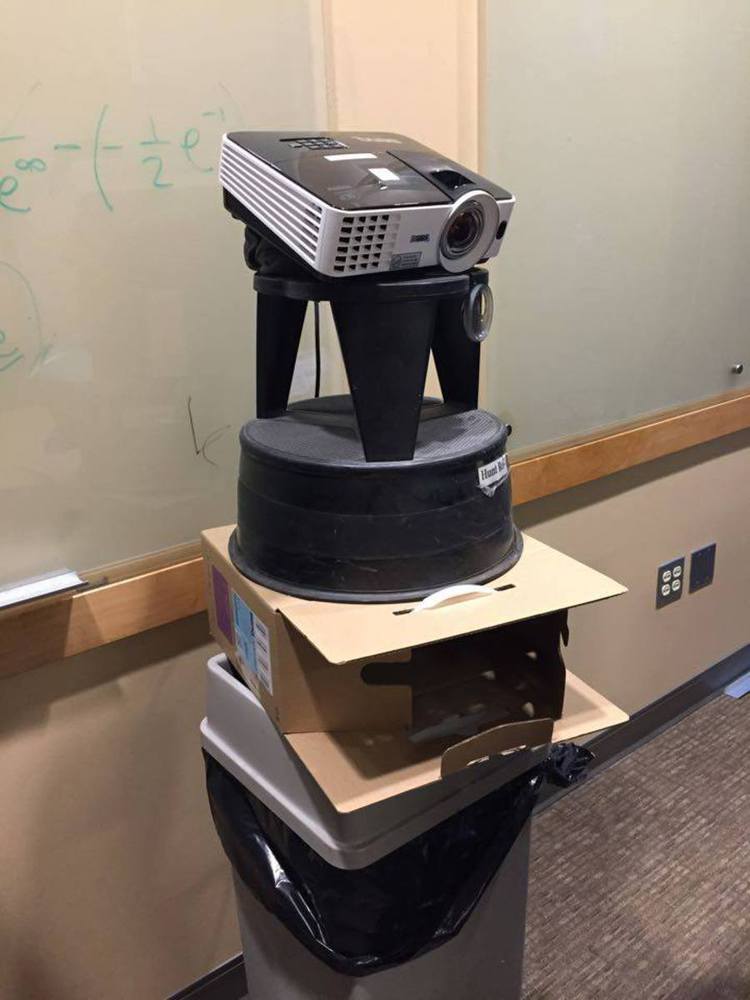Outcome
Our project is hopefully an ironic blend of reality and virtuality in the context of Japanese popular culture. As explained in the context below, virtual Japanese culture often makes the virtual seem more appealing, despite the fact that they are supposed to act as a reflection of reality, a theme not uncommon globally. Specifically, in our project, we attempt to depict a particular niche of the various genres of Japanese popular culture that seems uniquely Japanese: vocaloids. We aim to use our shadow silhouettes as a metaphor for these virtual, singing and dancing figures to gauge the reaction of our mostly Western audience to the Japanese version of virtual environment.
Our project was inspired by the popularity of vocaloids, computerized voices with unique personas and also computerized visual appearances, in Japanese virtual entertainment. Interestingly enough, these vocaloids are often given their own concerts, in which real people gather in a concert hall to watch holographic projections of their favorite vocaloids sing and dance on stage. Because we are ultimately real people, we decided to create a disparity between our physical self and a projection of ourselves, consequently creating a degree of distance, by using our shadows as a metaphor for these virtual figures. An example of a vocaloid concert is given below, along with a video of our dances, modeled by a vocaloid and other shadow silhouette dances.
Process
From the beginning, we wanted to perform a shadow dance because we were able to utilize projectors in this performance, and performing a dance utilizing shadows seemed mysterious and appealing. We at first wanted to use the themes of Alice in Wonderland, because they are known to be trippy and confusing, but also have many subliminal messages that we could explore. We considered creating a shadow performance to the song “In a World of My Own” and wanted to use the lyrics in the performance. In fact, we planned on having two people perform in front of the projector and the third person add to the performance indirectly. The third person would not be seen in front of the projector, but simply make small hand gestures closer to the projector to take advantage of the fact that changing the distance from the projector can change the size of the shadow projected. However, this was not a dance as we had wanted originally, so we decided to change our approach and instead decided to do an actual dance instead.We worked together to find a dance that we could learn quickly and effectively. It was quite tricky and as a group, we joined our interests in Japanese music and animation to find a dance and song that we all liked. We decided that Judy and Ashley would perform and dance while Vicki would work behind the scenes with the projector. Together, we worked out a configuration where we would be able to have enough distance between the projector and the screen for the shadow silhouettes to be effective. While Ashley and Judy were learning the dance, Vicki compiled videos of a serene path in the background, which would allow for interaction between the dancers and the media.
We ran into quite a few challenges with our project. We learned the importance of having enough distance between a projector and the screen in order for the sizing to be correct. If we could do it differently, likely we would try to have more screen space so that Judy and Ashley wouldn't be crammed in trying to dance in a small space and perhaps have the background be a bit brighter so it would be more visible. Our initial configuration with a large screen in the room probably would have worked more effectively than using the conference room because it was too small in there for a project like ours. In addition, perhaps the timing of the speakers and the video could have been better--we had trouble syncing the video and the music because we couldn't hear it from the other room (so hopefully we danced to the right time!).
We feel that though our idea was really interesting, it could have been better executed had we had more time and resources. I think it would have been really interesting had we played with the shadows more to create shapes such as with the other shadow dance videos, and also if there were more interaction behind the scenes, such as pretending to poke a person, or having props as shadows. However, that too would require more screen space, and we were slightly limited by the size of the conference room.
However, this project definitely made us more aware of all the effort it takes to create a life performance such as this, because there are so many variable elements. It also made us aware of how difficult a shadow performance exactly is...though they make it seem so easy in the videos!
You can upload files of up to 20MB using this form.

